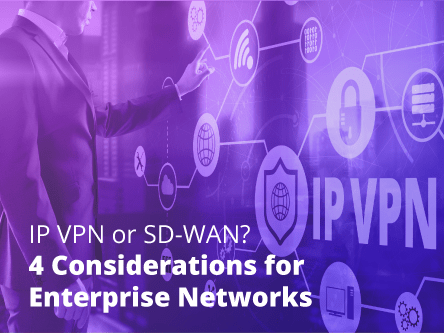As the growth and diversity of cloud computing services expands by leaps and bounds, more businesses are dipping their toes deeper into the technology.
At a nascent stage where the business uses cloud applications such as Microsoft 365 or web mail, their IT department may not need to invest in high bandwidth network.
However, there will come a time when the organisation, even a Small-Medium Enterprise (SME), will be ready to truly reap the benefits of the cloud. That’s when its legacy network infrastructure will need to become cloud-ready.
GIVING UP THE LEGACY
While many businesses may take pride in their finely-tuned MPLS network, this legacy technology hampers their move to the cloud.
Even if this can be made to work, its rigid and hardware-dependent backend impedes the cloud workflow that moves at lightning speed. Furthermore, as the benefits of cloud computing start returning positive results, businesses still running on outdated physical infrastructure will struggle to ramp up their network efficiency and security to keep pace with growth.
Other organisations may be willing to revamp their network in segments just to keep some legacy systems and servers.
Such a network infrastructure may be cloud-enabled, but a time will come when the well-known complexities of managing so many disparate connections can cause bottlenecks or even security loopholes. Cost-wise, vendor lock-in and expensive physical and manpower resources will eat into the IT budget.
Next, while businesses can jump straight into a multi-cloud model, numerous consequences may arise due to the use of a legacy network. With applications hosted in the public cloud—an environment that is not totally within your organisation’s control—the onus of security management falls on your legacy network.
Virtual private networks (VPN) were made to connect devices to networks, not users to applications. This reliance on VPN can result in poor user experience as application usage scales across the organsiation, and physical network resources cannot be upgraded economically to meet the demand.
Meanwhile, the touted agility of cloud-based workflows will be hampered by legacy networks that cannot be scaled dynamically or cost-efficiently.
GETTING YOUR NETWORK READY FOR NATIVE CLOUD
It is clear that the cloud is here to stay, and legacy systems and mindsets need to make way for not only cloud adoption, but for an ecosystem that is predominantly built from the ground up for cloud computing.
What are the various key characteristics to get a network cloud-ready?
- A robust virtualised network
The simplest, frictionless way for a network to be cloud-ready is to be based on a software-defined architecture.An SD-WAN architecture is the gateway to fast and secure connectivity to the cloud and other infrastructure. Once a robust virtualised network is in place, an organisation is ready to tap into a rich landscape of cloud services and interconnect optimally. - Greater visibility and reach
The right SD-WAN solution offers better visibility over the network traffic between data centres and into the cloud.Users gain greater visibility into the WAN environment and real-time analytics. But as an organisation grows bigger, it will need to manage the network with full visibility as well as having the scalability to grow and meet changing business needs.That’s where software-defined networking (SDN) platforms come into play to support an enterprise’s overall cloud-first strategy. It can leverage on an SDN platform to interconnect more data centres and for secure cloud connection via a global network fabric. - Cloud-centric interconnect fabric
A cloud-ready network should have access to private on-ramp to a cloud interconnect ecosystem. This means being able to securely connect multiple cloud services with a single service provider.For example, a US-based enterprise looking for cloud and data centre interconnect in Europe and China can stitch together a network across multiple regions using an SDN platform. The SDN fabric also makes it easier for interconnecting across a more diverse ecosystem be it public cloud services, data centres or networks. - Carrier-grade network
A business relies on multiple service providers for their connectivity needs and will have to consider their network partner carefully. The underlying infrastructure is one of the considerations when choosing a network service provider.At Epsilon, our services are delivered over a high-performing, carrier-grade MEF-certified ethernet network that we continue to upgrade to enable greater scalability and new level of automation.
All the characteristics above culminate in agile and simple connectivity to the growing cloud universe.
However, it is not a given.
Organisations that are serious in their cloud strategy need a cloud-ready network to achieve their cloud transformation goal.
Essentially, having a network partner who is dedicated to your success and has the core capabilities to support your objectives can make a world of difference.







